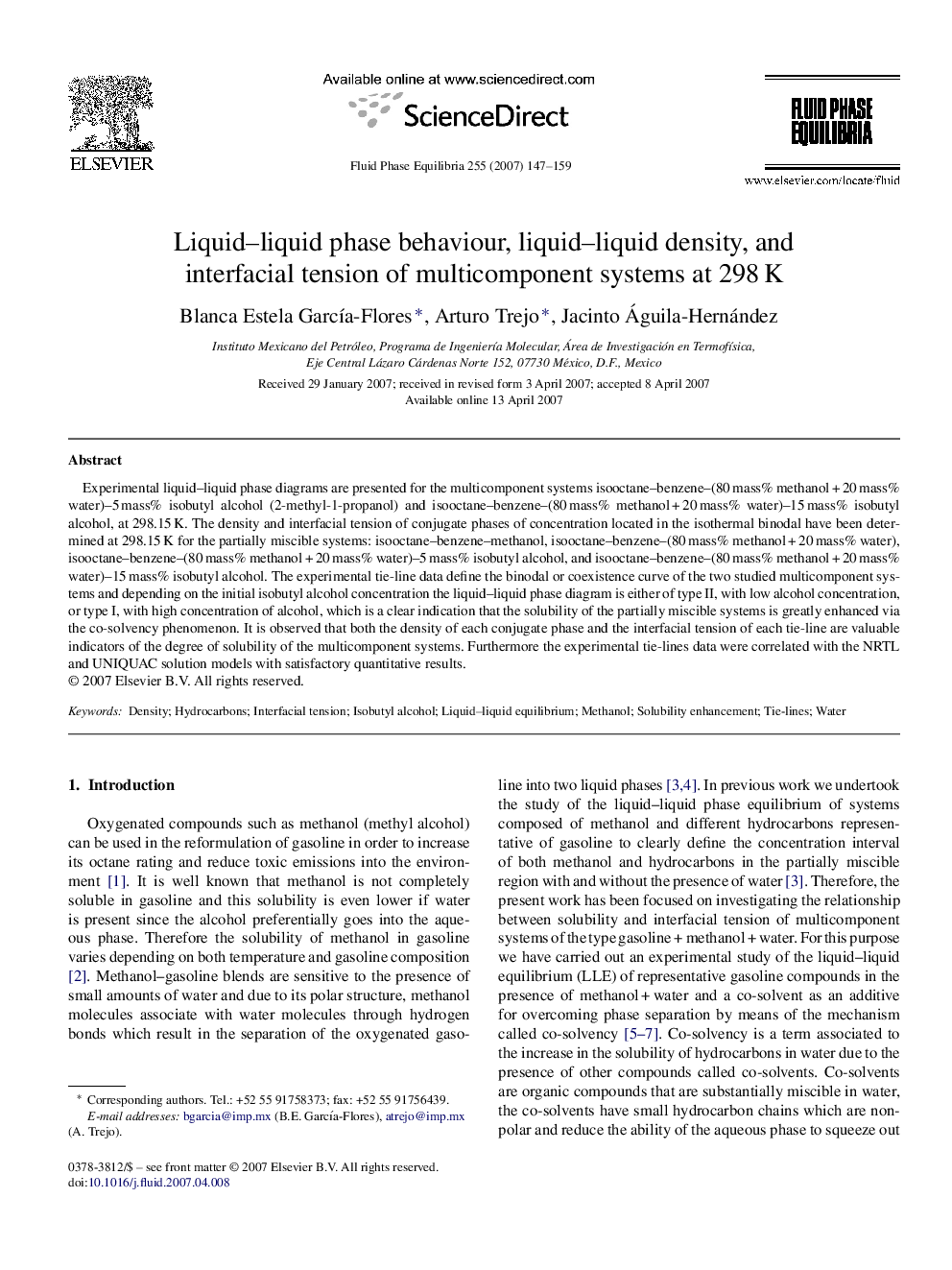| Article ID | Journal | Published Year | Pages | File Type |
|---|---|---|---|---|
| 203466 | Fluid Phase Equilibria | 2007 | 13 Pages |
Experimental liquid–liquid phase diagrams are presented for the multicomponent systems isooctane–benzene–(80 mass% methanol + 20 mass% water)–5 mass% isobutyl alcohol (2-methyl-1-propanol) and isooctane–benzene–(80 mass% methanol + 20 mass% water)–15 mass% isobutyl alcohol, at 298.15 K. The density and interfacial tension of conjugate phases of concentration located in the isothermal binodal have been determined at 298.15 K for the partially miscible systems: isooctane–benzene–methanol, isooctane–benzene–(80 mass% methanol + 20 mass% water), isooctane–benzene–(80 mass% methanol + 20 mass% water)–5 mass% isobutyl alcohol, and isooctane–benzene–(80 mass% methanol + 20 mass% water)–15 mass% isobutyl alcohol. The experimental tie-line data define the binodal or coexistence curve of the two studied multicomponent systems and depending on the initial isobutyl alcohol concentration the liquid–liquid phase diagram is either of type II, with low alcohol concentration, or type I, with high concentration of alcohol, which is a clear indication that the solubility of the partially miscible systems is greatly enhanced via the co-solvency phenomenon. It is observed that both the density of each conjugate phase and the interfacial tension of each tie-line are valuable indicators of the degree of solubility of the multicomponent systems. Furthermore the experimental tie-lines data were correlated with the NRTL and UNIQUAC solution models with satisfactory quantitative results.
